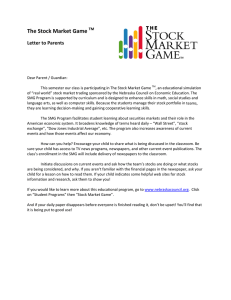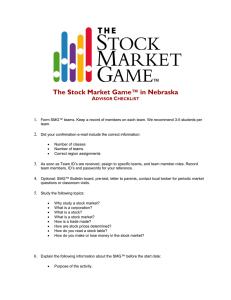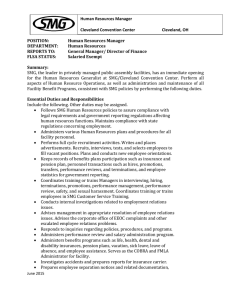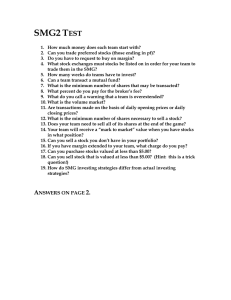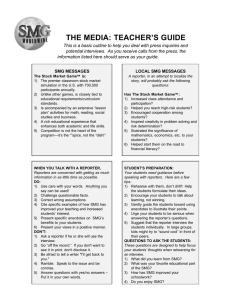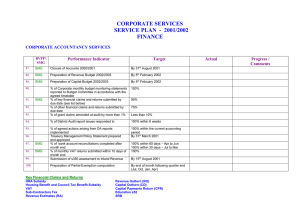HOW DO I BEGIN?
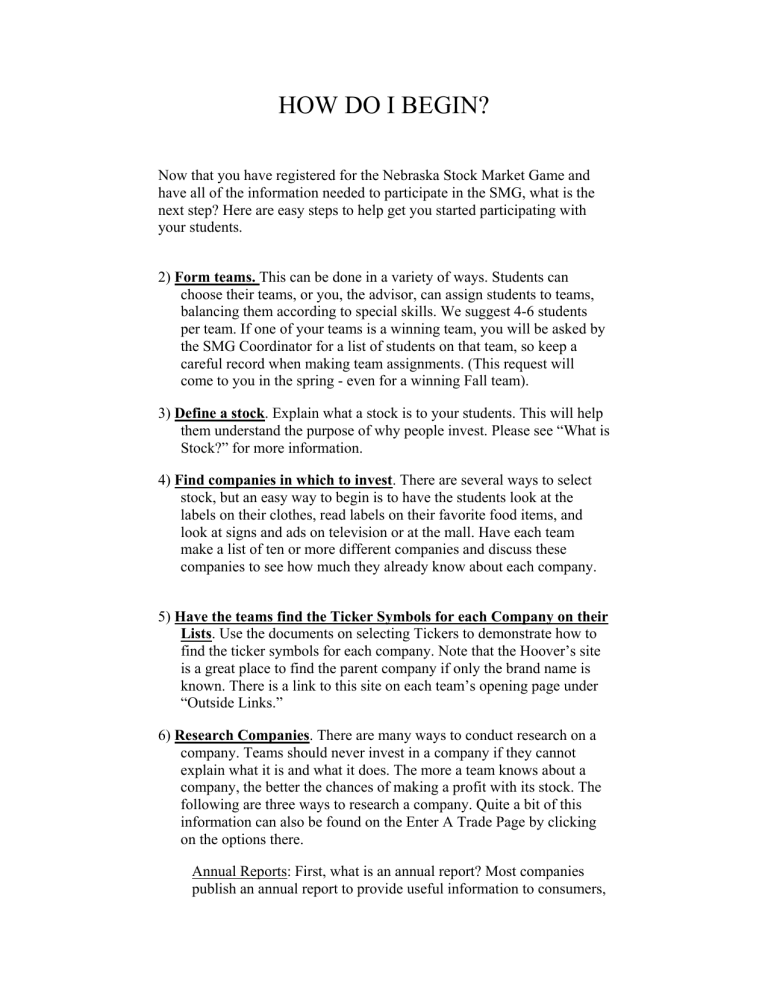
HOW DO I BEGIN?
Now that you have registered for the Nebraska Stock Market Game and have all of the information needed to participate in the SMG, what is the next step? Here are easy steps to help get you started participating with your students.
2) Form teams. This can be done in a variety of ways. Students can choose their teams, or you, the advisor, can assign students to teams, balancing them according to special skills. We suggest 4-6 students per team. If one of your teams is a winning team, you will be asked by the SMG Coordinator for a list of students on that team, so keep a careful record when making team assignments. (This request will come to you in the spring - even for a winning Fall team).
3) Define a stock . Explain what a stock is to your students. This will help them understand the purpose of why people invest. Please see “What is
Stock?” for more information.
4) Find companies in which to invest . There are several ways to select stock, but an easy way to begin is to have the students look at the labels on their clothes, read labels on their favorite food items, and look at signs and ads on television or at the mall. Have each team make a list of ten or more different companies and discuss these companies to see how much they already know about each company.
5) Have the teams find the Ticker Symbols for each Company on their
Lists . Use the documents on selecting Tickers to demonstrate how to find the ticker symbols for each company. Note that the Hoover’s site is a great place to find the parent company if only the brand name is known. There is a link to this site on each team’s opening page under
“Outside Links.”
6) Research Companies . There are many ways to conduct research on a company. Teams should never invest in a company if they cannot explain what it is and what it does. The more a team knows about a company, the better the chances of making a profit with its stock. The following are three ways to research a company. Quite a bit of this information can also be found on the Enter A Trade Page by clicking on the options there.
Annual Reports: First, what is an annual report? Most companies publish an annual report to provide useful information to consumers,
investors, customers, and the general public. It includes information about the company’s products and financial information—profits, losses, and assets. From this information, teams should be able to determine if a company is growing and making a profit or if it is losing money and decreasing in value. Next, how do you get annual reports? There are several ways to obtain annual reports. You can call, write, fax, or e-mail a company to request that its annual report be mailed. Most public and university libraries have copies of the recent annual reports on many well-known companies. If the company has a website, its annual report is usually available on line.
Newspapers: Newspapers are excellent resources for current events, stock prices, and other economic information. Newspapers often have stories on businesses that are merging, expanding, and offering new products or services, as well as stories related to financial problems or bankruptcies. See also the information in the Blue section on how to relate good and bad news to companies and industries. Use some of the activities provided in the booklet inside the back cover of this notebook called “SMG Exercises: Using
Newspapers in the Classroom.” These activities are a great way to teach your students different concepts related to the stock market.
Websites: The Internet has become one of the most useful tools for researching companies and the stock market. Most companies have websites that contain a wealth of information on both products and financial conditions. Many also have charts and graphs showing the recent history of their stock prices so students can also learn how to read and understand graphs. This is a good way for students to learn how to utilize technology to perform research.
7) Have Fun: The SMG is a valuable and fun program to educate students in a variety of subjects. You will be amazed at how excited the students get while tracking and watching their stocks. Be open to letting your students share things they have learned and are willing to teach the others. Most of all, be prepared to learn a great deal yourself from your students in the process of playing the SMG!
